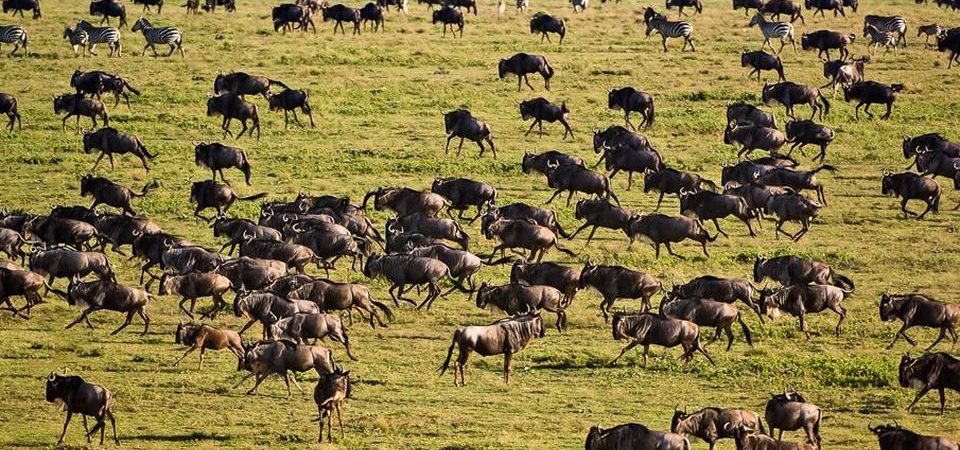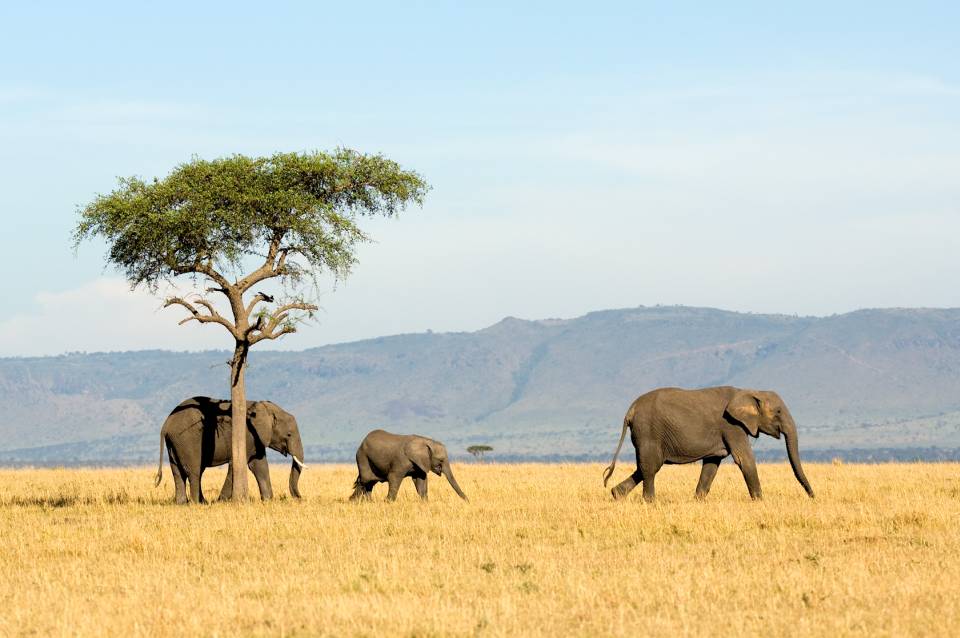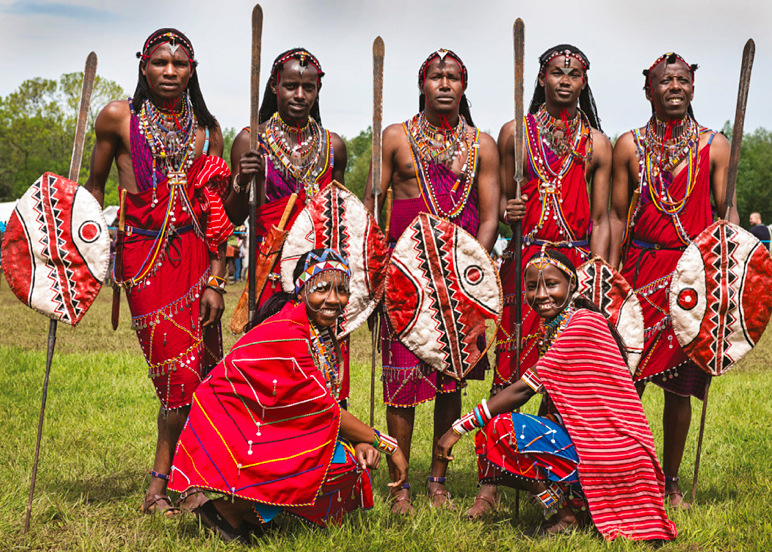History of Serengeti National Park : Serengeti National Park is a national park and wildlife sanctuary located in north-central Tanzania on the Serengeti Plain. It is Tanzania’s oldest national park, and it is what brings the majority of visitors to the country. It is located northwest of the bordering Ngorongoro Conservation Area and partly next to the Kenyan border. It’s best known for its massive herds of plains animals, including wildebeests, gazelles, and zebras, and it’s the only area in Africa where gigantic land-animal migrations still occur. In 1981, the park was inscribed on the UNESCO World Heritage List as an international tourist attraction.
Explorers and missionaries documented the Serengeti plains and the large numbers of animals found there in the late 1800s and early 1900s. Only a few details were documented until explorations in the late 1920s and early 1930s provided the first references to the great wildebeest migrations, as well as the first images of the region.
The Serengeti is derived from the Maasai word Siringet (meaning “a place where land stretches forever”). Before the arrival of the first European explorer, Oscar Baumann, in 1892, the Masai had lived in the Serengeti plains for over 200 years. The Serengeti attracted sport hunters from Europe and the United States at the time because it had arguably the largest number of big game in Africa. The British colonial authorities were obliged to transform it into a partial game reserve in 1921 due to uncontrolled lion hunting. Sport hunting was permitted until 1937, after which all hunting was prohibited. The area was designated as a protected area in 1940, and the National Park was established in 1951, incorporating the southern Serengeti and the Ngorongoro highlands. The park headquarters were built on the rim of the Ngorongoro crater.

As a result, when the Serengeti National Park was established in 1951, it included what is now the Ngorongoro Conservation Area (NCA). The Ngorongoro Conservation Area was separated from the Serengeti National Park in 1959, and the park’s limits were extended to the Kenyan border. The main reason for separating the Ngorongoro from the rest of the park was that local Maasai residents understood they were facing eviction and, hence, were not allowed to graze their cattle within the park’s boundaries, thus History of Serengeti National Park . Protests were held to prevent this from happening. The Ngorongoro Crater Area was carved off from the national park as a compromise, allowing the Maasai to dwell and graze their livestock in the Ngorongoro Crater Area but not in the Serengeti National Park.
In 1961, Kenya established the Masai Mara National Reserve, and in 1965, Serengeti National Park added the Lamai Wedge between the Mara River and Kenya’s border, creating a permanent corridor for wildebeests to travel from the Serengeti plains in the south to the Loita Plains in the north. In 1967, a small area north of the Grumeti River in the western corridor was added to the Maswa Game Reserve, which was established in 1962. The Serengeti National Park presently encompasses 5,700 square miles (14,763 square kilometers) of some of Africa’s greatest grasslands, as well as a large acacia forest savanna.
THE SERENGETI NATIONAL PARK CLIMATE
The average annual precipitation ranges from 1150mm in the northwest to 950mm in the western corridor, with less than 500mm in the Ngorongoro Highlands’ lee. It primarily occurs from October to May, with peaks in November (brief rains) and March to April (long rains). The wildebeest migration north is triggered by the annual drying up in May, and the return migration south is triggered by the rains that begin in October. The climate is generally warm and dry, with the coolest months being June and October, and an average yearly temperature of 20.8 °C, which is typically less than the diurnal variation.

WILDLIFE IN THE SERENGETI NATIONAL PARK ECOSYSTEM
The park is now well-known for its large population of wild animals, particularly wildebeest, zebra, and gazelle. There are approximately 3,000 lions, as well as large numbers of spotted hyenas, leopards, rhinoceroses, hippopotamuses, giraffes, cheetahs, and baboons among the more than 35 species of plains animals. Crocodiles live in the marshes along the Mara River. More than 350 bird species have been identified, including ostriches, vultures, and flamingos.
Every year, nearly 1.5 million wildebeest, 300,000 gazelles, and 200,000 zebras migrate across the Serengeti National Park and into the Masai Maara National Reserve. This phenomenon is considered one of the world’s top ten natural wonders, drawing thousands of visitors to the park each year. Although the migrating grazers are a major draw, don’t forget that the Serengeti National Park is also home to the Big 5 (lions, leopards, elephants, rhinos, and buffaloes), which attract visitors all year, thus History of Serengeti National Park .
TOURISM IN THE SERENGETI NATIONAL PARK
Tanzania’s Serengeti National Park is a wildlife paradise for anyone contemplating an African trip. Every year, nearly 100,000 international visitors visit the park. The funds raised from tourists are crucial for wildlife protection, community development in the park’s vicinity, research, and other park projects.
Greater wildlife migration, the Big Five, and physical features such as the kopjes and the park’s infinite plain are the Serengeti National Park’s main attractions and selling points.
Day and night game drives, balloon safaris over the vast plains, walking safaris, following the great migration, birding, visiting the Serengeti Visitor Center, visiting the Bologonja Springs, visiting the Olduvai Gorge, exploring the Masai Cultural Villages, and exploring the Kopjes are among the most popular tourist activities in the park.
The day game drives are specifically planned to allow guests to see the big five species. Morning, afternoon, and night game drives are available. Night game drives are intended to allow guests to see nocturnal animals.
Both day and night game drives are stunning in their own right, but night game drives are particularly good for viewing the never-ending fights between predator and victim. Observing the great migration and big fives is similar to day game drives. It’s also worth noting that hot air balloons can be used to watch the Big 5 and the migration from above. Aerial views of the immense wilderness and Kopjes offer a unique perspective on the park.
Apart from the wildlife, Tanzania also offers the opportunity to participate in a unique cultural encounter with the Maasai Tribe in their communities. The Maasai will take you to their farmhouses (known as bomas) to teach you about their nomadic way of life, traditional clothing code, marriage rites, the education system, and their old habit of raising domestic animals on a typical visit. A trip to the Maasai isn’t complete without participating in a traditional Maasai dance and purchasing some of their goods.

Don’t forget to stop at the Serengeti Visitor Center before leaving the park. You may learn more about the park, its history, the habitat, and the fauna by walking around the center. The center boasts lovely grounds and is a great place to relax or have a picnic. The Serengeti Visitor Center is the place to go if you’re looking for the best gifts.

